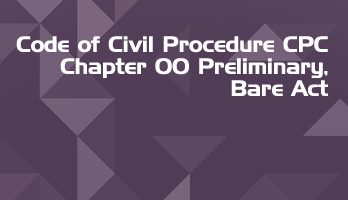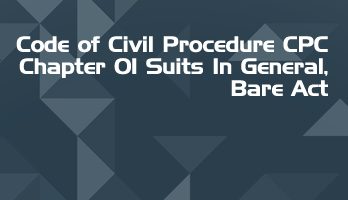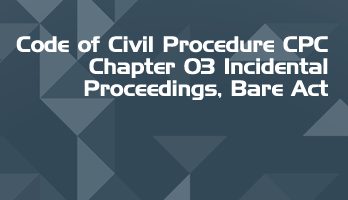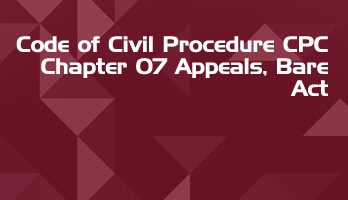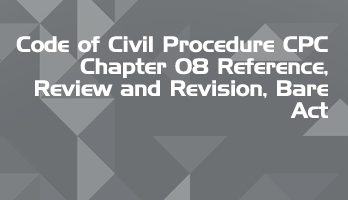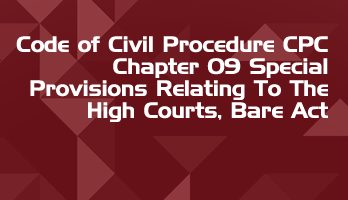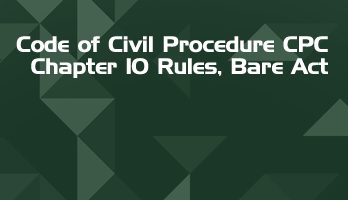A 'Bare act' is the actual legislation passed by the Parliament of India. Generally, an act sets out the high level legal and policy principles applicable to the subject matter of the law.
Most acts are accompanied by 'subsidiary legislation' such as rules, regulations, notifications and orders; which address the actual implementation detail of the act.
Free Full Course Available on LawMint's YouTube Channel
How to Land Your Dream LLB Internship in a Top Law Firm
- Part 1 - Introduction
- Part 2 - Internship Planning
- Part 3 - Internship Research
- Part 4 - Building Your Profile
- Part 5 - The Email
- Part 6 - The Resume
- Part 7 - The Cover Letter
- Part 8 - The Interview
- Part 9 - Self Development
Practical and comprehensive course, with real examples and step-by-step analysis of the complete internship application process. Check out LawMint's YouTube channel now!
The Indian Evidence Act, 1872
Chapter 6 – Of the Exclusion of Oral or Documentary Evidence
Section 91 – Evidence of terms of contracts, grants and other dispositions of property reduced to form of document
When the terms of a contract, or of a grant, or of any other disposition of property, have been reduced to the form of a document, and in all cases in which any matter is required by law to be reduced to the form of a document, no evidence shall be given in proof of the terms of such contract, grant or other disposition of property, or of such matter, except the document itself, or secondary evidence of its contents in cases in which secondary evidence is admissible under the provisions herein – before contained.
Exceptions
- When a public officer is required by law to be appointed in writing, and when it is shown that any particular person has acted as such officer, the writing by which he is appointed need not be proved.
- Wills admitted to probate in India may be proved by the probate.
Explanations
- This section applies equally to cases in which the contracts, grants or dispositions of property referred to are contained in one document, and to cases in which they are contained in more documents than one.
- Where there are more originals than one, one original only need be proved.
- The statement, in any document whatever, of a fact other than the facts referred to in this section, shall not preclude the admission of oral evidence as to the same fact.
Illustrations
- If a contract be contained in several letters, all the letters in which it is contained must be proved.
- If a contract is contained in a bill of exchange, the bill of exchange must be proved.
- If a bill of exchange is drawn in a set of three, one only need be proved.
- A contracts, in writing, with B for the delivery of indigo upon certain terms. The contract mentions the fact that B had paid A the price of other indigo contracted for verbally on another occasion. Oral evidence is offered that no payment was made for the other indigo. The evidence is admissible.
- A gives B receipt for money paid by B. Oral evidence is offered of the payment. The evidence is admissible.
Section 92 – Exclusion of evidence of oral agreement
When the terms of any such contract, grant or other disposition of property, or any matter required by law to be reduced to the form of a document have been proved according to the last section, no evidence of any oral agreement or statement shall be admitted, as between the parties to any such instrument or their representatives in interest, for the purpose of contradicting, varying, adding to, or subtracting from, its terms;
Proviso (1): Any fact may be proved which would invalidate any document, or which would entitle any person to any decree or order relating thereto; such as fraud, intimidation, illegality, want of due execution, want of capacity in any contracting party want or failure of consideration, or mistake in fact or law:
Proviso (2): The existence of any separate oral agreement as to any matter on which a document is silent, and which is not inconsistent with its terms, may be proved. In considering whether or not this proviso applies, the Court shall have regard to the degree of formality of the document:
Proviso (3): The existence of any separate oral agreement, constituting a condition precedent to the attaching of any obligation under any such contract, grant or disposition of property, may be proved.
Proviso (4): The existence of any distinct subsequent oral agreement to rescind or modify any such contract, grant or disposition of property, may be proved, except in cases in which such contract, grant or disposition of property is by law required to be in writing, or has been registered according to the law in force for the time being as to the registration of documents.
Proviso (5): Any usage or custom by which incidents not expressly mentioned in any contract are usually annexed to contracts of that description, may be proved; Provided that the annexing of such incident would not be repugnant to, or inconsistent with the express terms of the contract:
Proviso (6): Any fact may be proved which shows in what manner the language of a document is related to existing facts.
Illustrations
- A policy of insurance is effected on goods in ships from Calcutta to London. The goods are shipped in a particular ship which is lost. The fact that particular ship was orally excepted from the policy, cannot be proved.
- A agrees absolutely in writing to pay B Rs. 1,000 on the 1st March, 1873. The fact that, at the same time an oral agreement was made that the money should not be paid till the thirty – first March, cannot be proved.
- An estate called the Rampur tea estate is sold by a deed which contains a map of the property sold. The fact that land not included in the map had always been regarded as part of the estate and was meant to pass by the deed, cannot be proved.
- A enters into a written contract with B to work certain mines, the property of B, upon certain terms. A was induced to do so by a misrepresentation of B’s as to their value. This fact may be proved.
- A institutes a suit against B for the specific performance of a contract, and also prays that the contract may be reformed as to one of its provisions, as that provision was inserted in it by mistake. A may prove that such a mistake was made as would by law entitle him to have the contract reformed.
- A orders goods of B by a letter in which nothing is said as to the time of payment, and accepts the goods on delivery. B sues A for the price. A may show that the goods were supplied on credit for a term still unexpired.
- A sells B a horse and verbally warrants him sound. A gives B a paper in these words Bought of A a horse for Rs. 500. B may prove the verbal warranty.
- A hires lodging of B, and gives B a card on which is written – Rooms, Rs. 200 a month. A may prove a verbal agreement that these terms were to include partial board. A hires lodging of B for a year, and a regularly stamped agreement, drawn up by an attorney, is made between them. It is silent on the subject of board. A may not prove that board was included in the term verbally.
- A applies to B for a debt due to A by sending a receipt for the money. B keeps the receipt and does not send the money. In a suit for the amount, A may prove this.
- A and B make a contract in writing to take effect upon the happening of a certain contingency. The writing is left with B, who sues A upon it. A may show the circumstances under which it was delivered.
Section 93 – Exclusion of evidence to explain or amend ambiguous document
When the language used in a document is, on its face, ambiguous or defective, evidence may not be given of facts which would show its meaning or supply its defects.
Illustrations
- A agrees, in writing, to sell a horse of B for Rs. 1,000 or Rs. 1,500. Evidence cannot be given to show which price was to be given.
- A deed contains blanks. Evidence cannot be given of facts which would show how they were meant to be filled.
Section 94 – Exclusion of evidence against application of document to existing facts
When language used in a document is plain in itself, and when it applies accurately to existing facts, evidence may not be given to show that it was not meant to apply to such facts.
Illustrations A sells to B, by deed, my estate at Rampur containing 100 bighas. A has an estate at Rampur containing 100 bighas. Evidence may not be given of the fact that the estate meant to be sold was one situated at a different place and of a different size.
Section 95 – Evidence as to document unmeaning in reference to existing facts
When language used in a document is plain in itself, but is unmeaning in reference to existing facts, evidence may be given to show that it was used in a peculiar sense.
Illustrations A sells to B, by deed, my house in Calcutta. A had no house in Calcutta, but it appears that he had a house at Howrah, at which B had been in possession since the execution of the deed. These facts may be proved to show that the deed related to the house of Howrah.
Section 96 – Evidence as to application of language which can apply to one only of several persons
When the facts are such that the language used might have been meant to apply to any one, and could not have been meant to apply to more than one, of several persons or things, evidence may be given of facts which show which of those persons or things it was intended to apply to.
Illustrations
- A agrees to sell to B, for Rs. 1,000, my white horse. A has two white horses. Evidence may be given of facts which show which of them was meant.
- A agrees to accompany B to Hyderabad. Evidence may be given of facts showing whether Haidarabad in the Dekkhan or Haidarabad in Sindh was meant.
Section 97 – Evidence as to application of language to one of two sets of facts, to neither of which the whole correctly applies
When the language used applies partly to one set existing facts, and partly to another set of existing facts, but the whole of it does not apply correctly to either, evidence may be given to show to which of the two it was meant to apply.
Illustrations A agrees to sell to B my land at X in the occupation of Y. A has land at X, but not in the occupation of Y, and he has land in the occupation of Y, but it is not at X. Evidence may be given of facts showing which he meant to sell.
Section 98 – Evidence as to meaning of illegible characters, etc
Evidence may be given to show the meaning of illegible or not commonly intelligible characters, of foreign, obsolete, technical, local and provincial expressions, of abbreviations and of words used in a peculiar sense.
Illustrations A, a sculptor, agrees to sell to B, all my mods. A has both models and modelling tools. Evidence may be given to show which he meant to sell.
Section 99 – Who may give evidence of agreement varying term of document
Persons who are not parties to a document, or their representatives in interest, may give evidence of any facts tending to show a contemporaneous agreement varying the terms of the document.
Section 100 – Saving of provisions of Indian Succession Act relating to wills
Nothing in this Chapter contained shall be taken to affect any of the provisions of the Indian Succession Act (10 of 1865)1 as to the construction of wills.
Important Central Acts in Regional Languages
Legislative department website also features regional language versions of several important Central Acts.
Free Full Course Available on LawMint's YouTube Channel
How to Land Your Dream LLB Internship in a Top Law Firm
- Part 1 - Introduction
- Part 2 - Internship Planning
- Part 3 - Internship Research
- Part 4 - Building Your Profile
- Part 5 - The Email
- Part 6 - The Resume
- Part 7 - The Cover Letter
- Part 8 - The Interview
- Part 9 - Self Development
Practical and comprehensive course, with real examples and step-by-step analysis of the complete internship application process. Check out LawMint's YouTube channel now!



